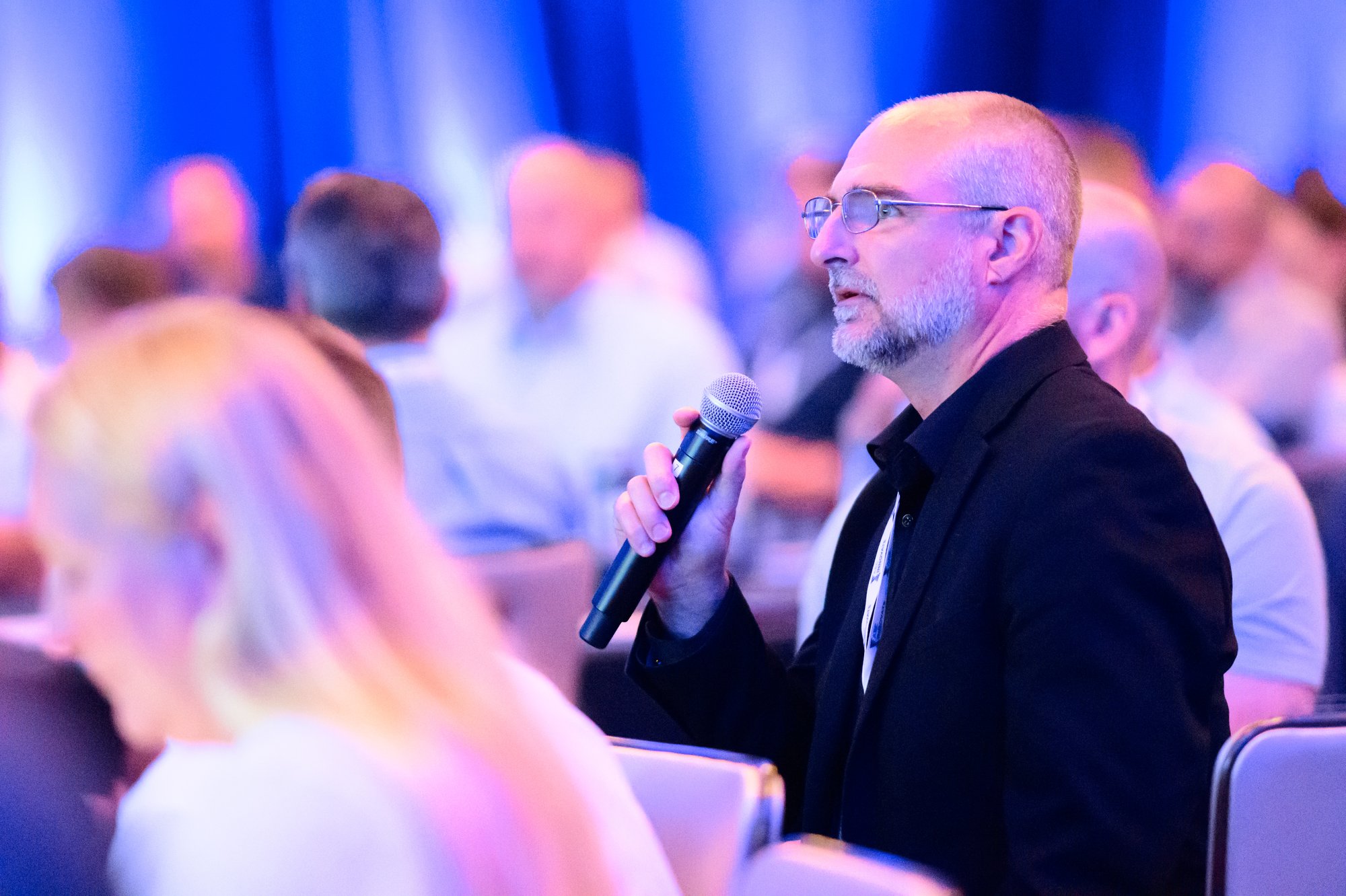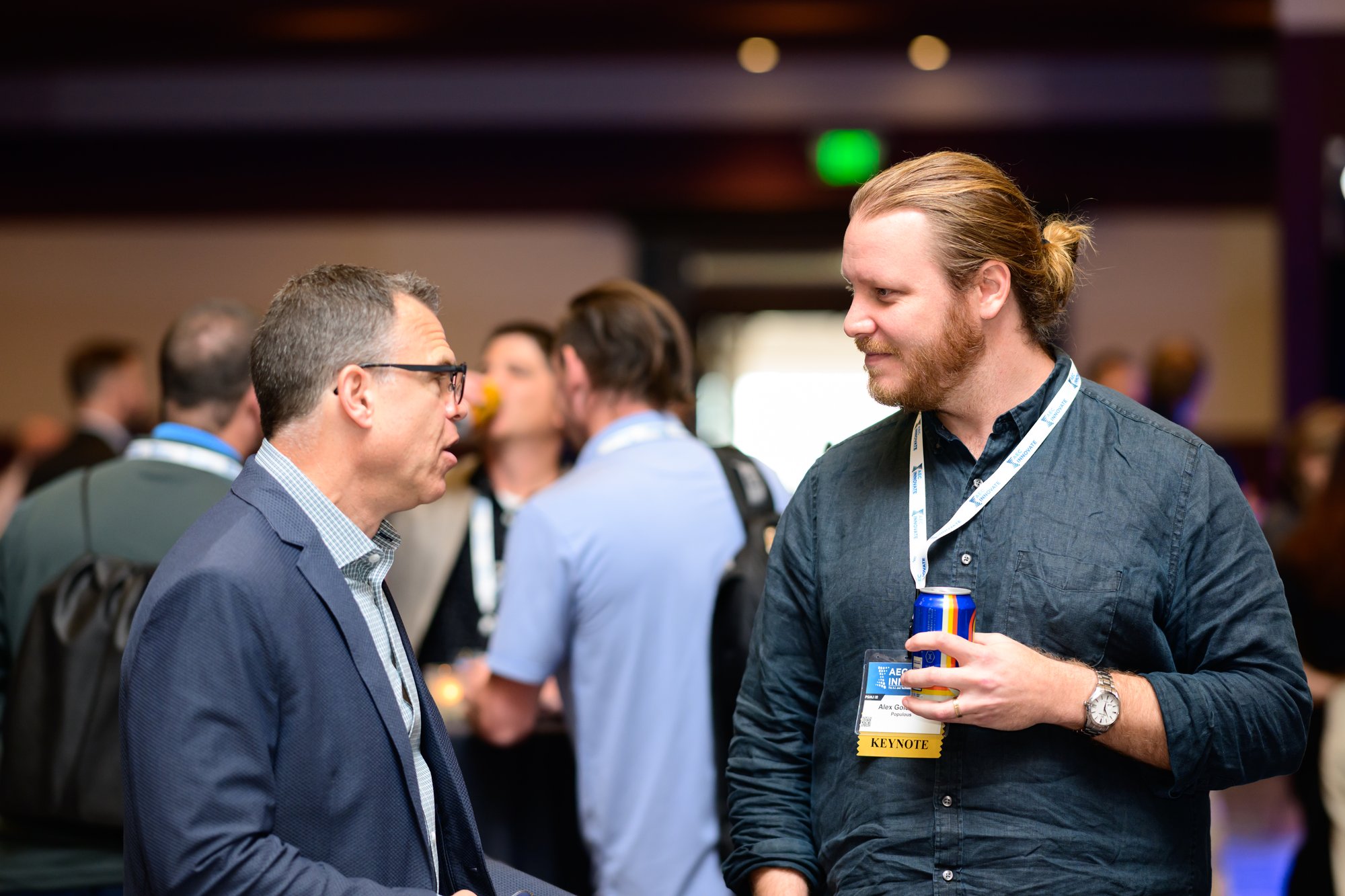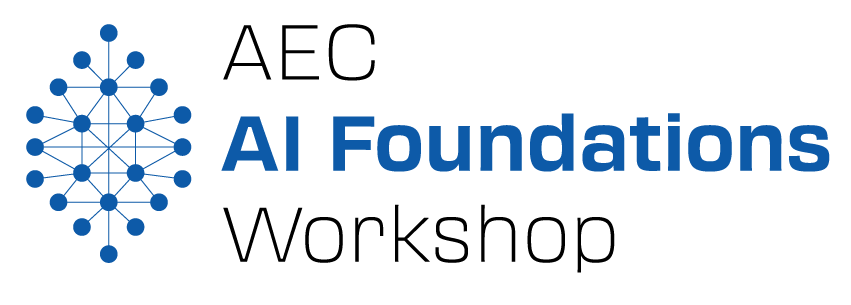
AEC INNOVATE is the executive education, networking, and expo event for architecture and engineering firm leaders ready to make smarter decisions about applying AI and other emerging tech.
Join your colleagues at the ARIA Resort, Las Vegas, June 16-18, 2026, and hear ACTUAL examples of how AEC firms are taking advantage the latest solutions. You meet face-to-face with the experts, developers, CTOs and CIOs, and analysts leading the way on smart applications of AI and other technology to the built environment. It's the MUST ATTEND deep-dive for senior AEC executives, Principals, and digital application and integration professionals.
What if there was one place where you could:
- Get actual case studies of architecture and engineering firms implementing AI to drive growth and deliver projects better?
- Interact directly with the most popular AI tools and software for architects and engineers?
- Develop a clear understanding of how, where, and when your firm should adopt disruptive technology and innovation?
AEC INNOVATE is the must-attend conference for architecture and engineering firm:
- CIO/Technology Manager/IT Administrator
- President/CEO
- Senior Vice President
- Principal
- Chief Design Officer/Engineering Director
- Anyone who wants to make smart strategic decisions about technology!
Attendee Testimonials
“I appreciated that this conference was truly actionable. Great networking and I have good nuggets I can take back and put into action.”
“Really great conference and so excited to put to use everything I learned!”
"This was one of the best conferences I have attended. It was highly substantive and was not a bunch of sales pitches. Very impressed with the speakers and presenters!”
“Excellent conference. I was extremely happy with the content presented.”
3 Reasons AEC INNOVATE is
MUST-ATTEND:

You get the latest case studies, data, and fresh ideas to help you RETHINK your AEC firm's technology strategy given a confusing array of options...

It's loaded with interactive learning sessions on applying AI to projects and mitigating innovation risk while maximizing return...

Networking opportunities that connect you to peer AEC executives and tech thought-leaders eager to share candid experiences and proven approaches.

Get even more out of your AEC INNOVATE experience when you add our optional AEC AI Foundations Pre-Conference Workshop.
New to the rapidly advancing applications of AI in AEC and ready to establish a fundamental knowledge base? You’re not alone!
Add our AEC AI Foundations Workshop to your event registration and on Tuesday before the full Summit opens you’ll get rapidly up to speed on the core terms, issues, challenges and opportunities of this rapidly advancing tech. Plus you’ll get hands-on experience with some of the newest tools. This primer session is perfect for AEC senior leaders, executives, and firm owners!

AEC INNOVATE Venue
AEC INNOVATE will be hosted at the ARIA Resort—an energizing venue in the center of the Las Vegas Strip that’s perfectly suited for valuable conversations and fresh ideas. With its modern design and walkable layout, ARIA provides a seamless experience for inspiration, networking, and collaboration.



